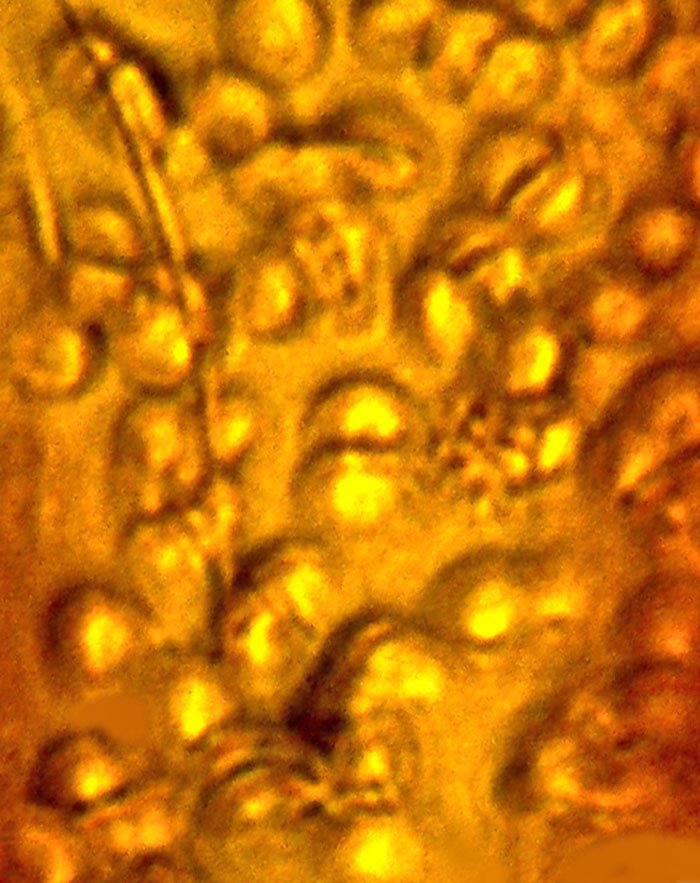Tick In Amber Said to Contain Oldest Mammalian Blood Cells Ever Found
Posted on Categories Discover Magazine

A tick preserved in amber, blood from what was likely a primate visible on its back. (Credit: George Poinar, Jr./Oregon State University)
Millions of years ago, two primates engaged contentedly in a grooming ritual that is still commonplace today. Searching diligently for pesky ticks and other insects, they cast them to the ground without so much as an afterthought. But one of those ticks would endure after landing in a patch of sticky sap, becoming entombed in amber with blood still flowing from a wound on its back.
That’s the story that one researcher has pieced together from the body of a tick, gorged with blood, found trapped in amber in the Dominican Republic. The specimen is estimated to be anywhere from 15 to 45 million years old, which would make it the oldest preserved mammalian blood cell specimen. The discovery is all the more exciting given it contains a blood-cell-eating parasite commonly carried by ticks.
No Stranger to Amber
The specimen was described in a a paper published in the Journal of Medical Entomology by George Poinar Jr., a professor at Oregon State University, and a source of inspiration for Michael Crichton’s Jurassic Park. He analyzed the red blood cells, and the parasite found within, to shed light on the dual evolutionary history of our primate ancestors and the species that feasted on them.

Fossilized red blood cells, preserved in amber. (Credit: George Poinar, Jr./Oregon State University)
The trapped tick was something of a windfall for science because it was preserved shortly after feeding. How it got to the sap, a flick of a monkey finger, was a stroke of luck, as well. The monkey’s grip punctured the tick’s shell, causing blood to stream out and betray its presence for curious scientists millions of years later. The blood cells are exquisitely preserved; in addition to protecting them the amber apparently drew dark outlines around the cells, causing them to stand out clearly.
Fossil Forensics
After extracting a sample, Poinar searched the blood for clues to its origin, and found that the cells also contained a species of parasite resembling Babesia microbes that still infect mammals today. These parasites attack red blood cells, and usually cause fever-like symptoms in those infected. The individual parasites were so well preserved that Poinar could pick out various forms the parasite shifted through as it matured.
He narrowed down the possible list of blood donors by first measuring the cells themselves, which eliminated everything but canines, rabbits and primates. While there is no fossil evidence for dogs or rabbits in the area at that time, monkeys have been discovered in South America dating back to 35 million years ago. Ticks are commonly found on primates, and the order of parasites Babesia belongs to have been found in monkeys today, as well. In addition, the marks on the ticks and its presence in the amber are both indicative of grooming behavior.
The study shows us that ticks and parasites have a long history of working together, and that the same mechanisms that work to infect us today were present over 15 million years ago, before humans even existed. Poinar says that the blood samples will be a crucial piece of evidence for scientist hoping to figure out how Babesia and similar parasites evolved.